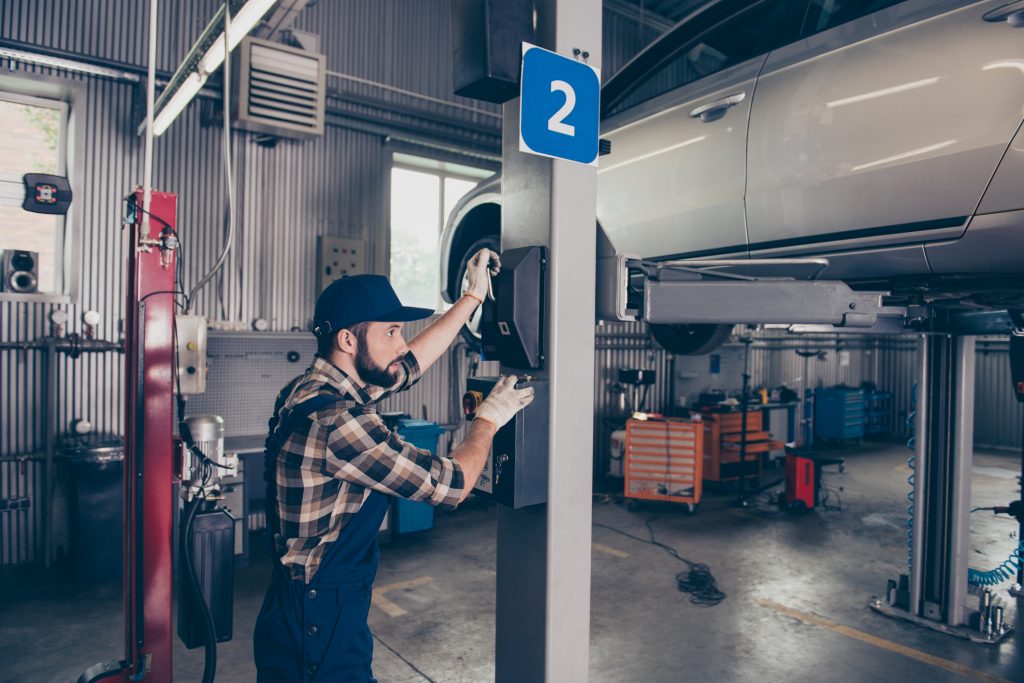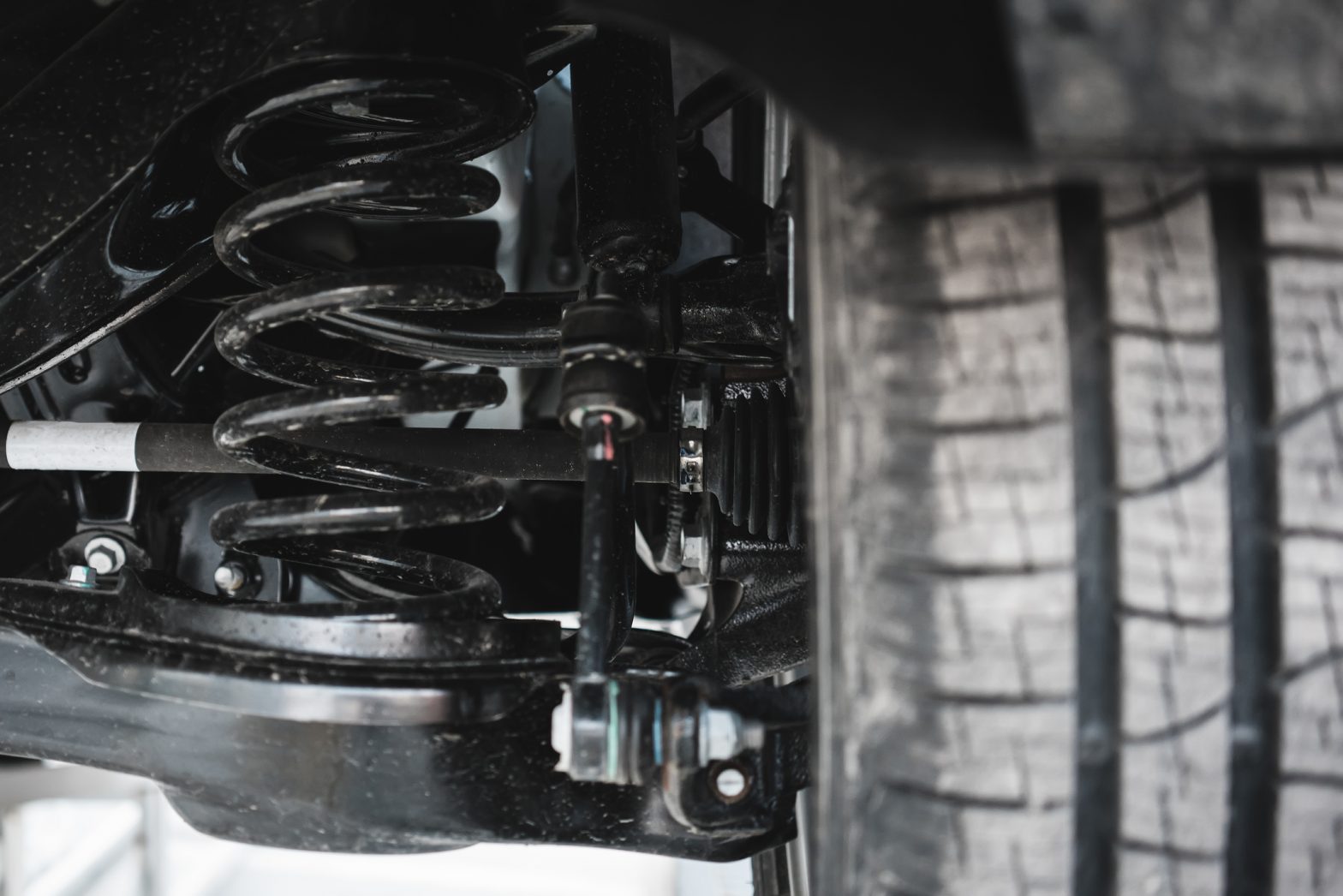Interested in Auto Body Training? Discover the Best Ways to Lower and Lift a Vehicle

Many drivers want to upgrade their vehicle’s appearance by lowering or lifting its body relative to the wheels. This can be a fun project for mechanics to undertake, as there are many different methods which can be employed to lower or lift a vehicle. Lowering or lifting a vehicle not only changes how a vehicle looks, but how it drives. A vehicle’s performance and appearance will depend on which lowering or lifting method is used, giving drivers some freedom to explore which option best suits their needs.
Here, we’ll take a look at the advantages and disadvantages of making a vehicle sit lower or higher, as well as some different ways to make the changes.
Those with Auto Body Training Should Know Advantages and Disadvantages of Lowering a Car
There are a few benefits of lowering a car to be aware of. Lowering a vehicle can not only enhance its appearance, but can also improve the handling of the vehicle, as its centre of gravity is lowered. This improves the safety of the vehicle by reducing the chances of it rolling over. Additionally, a lower vehicle has less aerodynamic drag—increasing fuel economy.

If a driver is considering lowering their vehicle, it’s important that professionals in auto careers inform them of the risks that can accompany this procedure. Lowering a vehicle increases the chances that it will bottom out, especially on curbs or speed bumps. This makes a vehicle’s underside more vulnerable, where important parts such as the exhaust system and oil pan are located. Lowering a vehicle’s suspensions can also cause problems for other parts of the car. A lowered suspension system can catch on the sidewalls of a car’s tires, and can potentially interfere with a vehicle’s anti-lock braking system, posing safety risks. Lastly, lowering a vehicle can make it harder to perform routine maintenance, as it reduces potential access points.
The Advantages and Disadvantages of Lifting a Car
Lifting a vehicle also comes with its own set of advantages and disadvantages. Lifting a car can improve a driver’s visibility, as sitting higher allows for a better view of the road ahead. Additionally, improved visibility allows for better towing capabilities, as there is less risk of bottoming out, which can occur when towing heavy objects. A lifted vehicle is also great for off-roading adventures, as lifting often improves the suspension and makes these vehicles less vulnerable to damage from extreme terrain.
While there are advantages, lifting a vehicle also negatively impacts the centre of gravity, making a vehicle more vulnerable to rollovers, and affecting a driver’s handling capabilities. In a lifted vehicle, drivers should be sure to travel more slowly around turns.
Ways to Lower a Vehicle
There are a few ways to lower a vehicle, all revolving around various adjustments to its suspension. The lowering type that ‘s best for a vehicle depends on what kind of suspension it’s equipped with. Here are three ways that a vehicle’s suspension can be lowered.
- Lowering a Coil Spring Suspension: In vehicles equipped with a coil spring suspension, the lowering process can be completed by manipulating the coil springs. These springs can be replaced with shorter springs, or those with auto body training can shorten the coils themselves by cutting them.
- Lowering a Leaf Spring Suspension: Many vehicles are equipped with leaf spring suspensions, which consist of thin spring steel strips that are bolted together. To lower a vehicle, these leaf springs can be removed from a vehicle’s rear suspension, de-arched outside of the vehicle, and re-bolted to a vehicle.
- Installing Hydraulic Suspension: Replacing a vehicle’s suspension system by installing a hydraulic suspension system. Hydraulic suspensions allow a driver to control the height of their vehicle and offer more safety and flexibility when navigating speed bumps or inclines.
If these options aren’t compatible with a vehicle’s suspension system, a lowering kit is another convenient option for lowering a car. These kits include matching parts to ensure compatibility, and can make the lowering process safer and easier.

Methods of Lifting a Vehicle
The idea of lifting is similar to that of lowering, but there are different factors to consider. Here are two common methods of lifting a vehicle.
- Body Lift: A vehicle can be lifted by raising its entire body, securing the body with rubber or polyurethane blocks, which maintain space between a vehicle’s body and its frame. With this method, the suspension system doesn’t move, making it one of the simpler lifting methods.
- Torsion Tweak: A torsion bar, which aids a vehicle in absorbing impact, is attached to the body of a car and maintains a certain height. A torsion bar acts as a spring, and by tightening this bar, a vehicle can be lifted. However, mechanics should ensure that the height of the vehicle remains balanced when using this method.
A vehicle can also be lifted by fixing it with a hydraulic suspension system, similar to the process used for lowering a vehicle. Hydraulic suspension systems can help a vehicle to withstand a lift without putting too much stress on its frame.
Are you interested in a career in auto body repair?
Check out ATC Surrey’s program options today.


